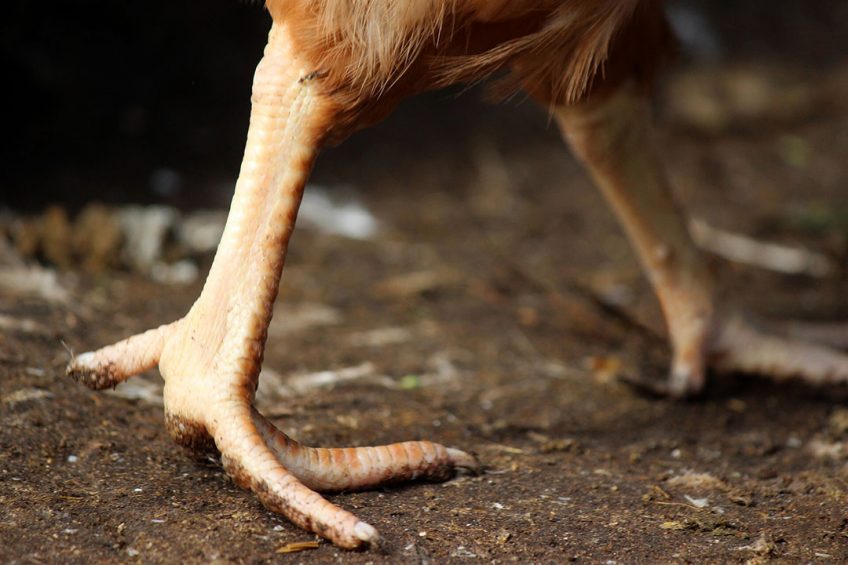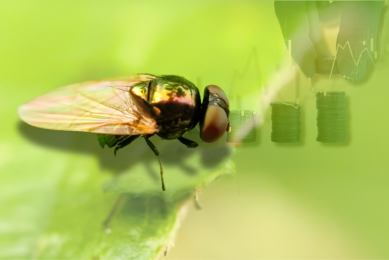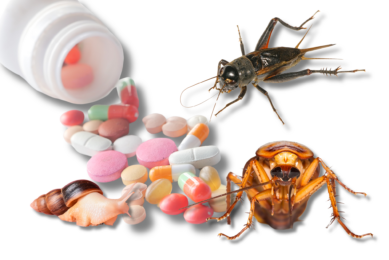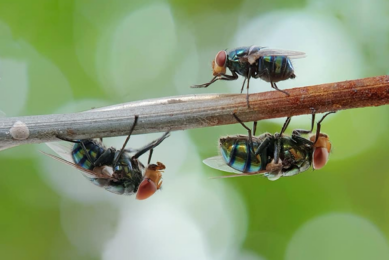Broilers benefit from live black soldier fly larvae

An experiment was conducted in the Netherlands to investigate the effect of scattering black soldier fly larvae in the litter of broilers.
Can environmental enrichment such as this, which facilitates intrinsically motivated behaviours, potentially promote activity and reduce leg problems?
The rapid growth rate achieved in broilers has attributed to the development of broiler lameness and impaired broiler leg bone development. Furthermore, moisture and ammonia aggregate in the litter over time, and broilers that spend a lot of time resting in this litter are more prone to develop contact dermatitis.
Several studies have indicated that promoting activity from a young age onwards can advance leg bone development, and even increase activity levels later in life. An additional benefit of increased activity can be that the litter tends to dry easier when periodically mixed by, for example, scratching. Therefore, (early) facilitation of activity in broilers may benefit broiler welfare, as well as the health and performance of the birds. A promising environmental enrichment method is the scattering of desired feed items, such as insects, which are highly attractive to broilers.
The study
In the study, 360 day-old male Ross 308 broiler chicks were assigned to 1 of 5 treatments. Broilers in the control treatment did not receive the fly larvae throughout the experiment. In the other treatments, the amount and frequency of black soldier fly larvae provided to the birds varied. Broilers received either 5% or 10% of the estimated daily dietary dry matter intake as fly larvae (hereafter referred to as A5 and A10, respectively), provided either 2 or 4 times a day (F2 and F4, respectively) resulting in, apart from the control treatment, treatments A5F2, A5F4, A10F2 and A10F4. Broilers received the fly larvae at 08:00 and 14:00 for the F2 treatments and 08:00, 11:00, 14:00 and 17:00 for the F4 treatments. The larvae were scattered across the litter throughout the pen.
Results – increase in broiler active behaviours
All broilers that received black soldier fly larvae showed a profound increase in active behaviours and a significant increase was seen in time spent walking, standing idle, ground pecking and foraging, whilst their time spent resting was decreased compared to the control group.
The largest amount of larvae provided at the highest frequency – or 10% of the dietary dry matter provided 4 times a day – appeared most effective in promoting activity and lowering the occurrence of hock burn and lameness, while the final weight of these broilers was not significantly reduced compared to controls.
Results suggest that live black soldier fly larvae strongly motivates broilers to show active behaviour, particularly foraging, until the end of the rearing period, despite the energetic costs.
Apart from affecting broiler activity, the consumption of the fly larvae influenced broiler performance, even though by mimicking the nutritional value of the larvae in the feed a similar metabolisable energy intake was achieved for all treatment groups. The relative consumption of the larvae was slightly higher than anticipated, which could have caused a slight imbalance in amino acid uptake, affecting broiler growth.
Improved broiler leg health
In conclusion, this study showed a benefit to birds in terms of improved leg health and long-term elevated levels of foraging behaviour and general activity in broilers receiving black soldier fly larvae, and this effect was largest and most consistent for broilers receiving the larvae in the highest amount and frequency tested (10% of their dietary dry matter, 4 times a day).











